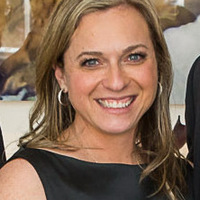Liz Feld
University of Toronto, Ontario Institute for Studies in Education (OISE), Graduate Student
- Museum Interpretation, Museum Education, Interpretation, Theatre, Classical Archaeology, Letters, and 17 moreSocial Justice in Education, Cultural Diversity, Museum, Collections Management, Inclusive Education, Repatriation (Archaeology), Reconciliation, Cultural Repatriation, Canada, Repatriation of Indigenous Human Remains, Truth and Reconciliation Commissions, Canadian Museums, Arts and Music for Health and Wellbeing, Museum Education and Communication, Musems and learning, Role of Museums, and Museum and social justiceedit
- Museum education professional. Researching ways to reinterpret Museum collections to further social justice and wellbeing initiatives.edit
The growing outrage over the continued stewardship of artefacts acquired through nefarious means has compelled cultural institutions to explore their role in marginalising cultures through misrepresentation. Indigenous communities around... more
The growing outrage over the continued stewardship of artefacts acquired through nefarious means has compelled cultural institutions to explore their role in marginalising cultures through misrepresentation. Indigenous communities around the globe are seeking the repatriation of sacred objects often collected through colonial violence. Though many museums have collaborated with communities to repatriate these artefacts, many have also avoided or refused repatriation requests, leaving communities without recourse. This paper will explore repatriation in the digital world through the lens of Cercle d'Art des Travailleurs de Plantation Congolaise's (CATPC) the quest for the return of an important Balot Pende sculpture from the Virginia Museum of Fine Arts, and whether creating a digital iteration, like an Non-Fungible Token (NFT) of a sacred object, offers a potential activist tool to reclaim an alternate form of ownership when physical repatriation is not available.
Research Interests:
Research Interests:
The growing outrage over the continued stewardship of artefacts acquired through nefarious means has compelled cultural institutions to explore their role in marginalising cultures through misrepresentation. Indigenous communities around... more
The growing outrage over the continued stewardship of artefacts acquired through nefarious means has compelled cultural institutions to explore their role in marginalising cultures through misrepresentation. Indigenous communities around the globe are seeking the repatriation of sacred objects often collected through colonial violence. Though many museums have collaborated with communities to repatriate these artefacts, many have also avoided or refused repatriation requests, leaving communities without recourse. This paper will explore repatriation in the digital world through the lens of Cercle d'Art des Travailleurs de Plantation Congolaise's (CATPC) the quest for the return of an important Balot Pende sculpture from the Virginia Museum of Fine Arts, and whether creating a digital iteration, like an Non-Fungible Token (NFT) of a sacred object, offers a potential activist tool to reclaim an alternate form of ownership when physical repatriation is not available.
Research Interests:
Museums have increasingly been exploring inclusion and diversity work and engaging in “decolonizing” educational programming. Complicating this undertaking are the fraught and violent histories that live within many museum collections.... more
Museums have increasingly been exploring inclusion and diversity work and engaging in “decolonizing” educational programming. Complicating this undertaking are the fraught and violent histories that live within many museum collections. The Indigenous peoples of Canada continue to suffer from systemic cultural genocide, as they have for hundreds of years through treaties signed under false pretenses, the pillaging and theft of sacred objects and human remains, and the ongoing trauma from the devastating “Sixties Scoop” and Residential School system. In 2015, the Truth and Reconciliation Commission (TRC) released a report with ninety-four calls to action that address the crimes committed against Indigenous populations. This article will argue that the repatriation of Indigenous sacred objects and human remains is essential toward reconciliation efforts in Canada and that it is the obligation of the Canadian museums to work with Indigenous and government partners to further the TRC recommendations through repatriation.
